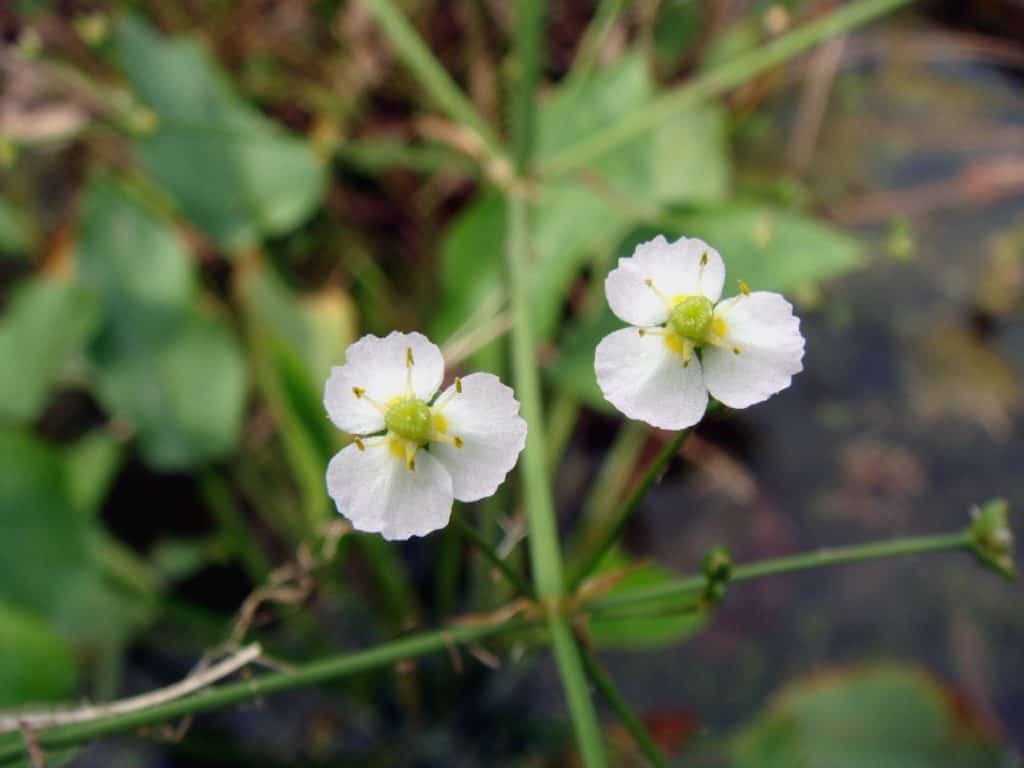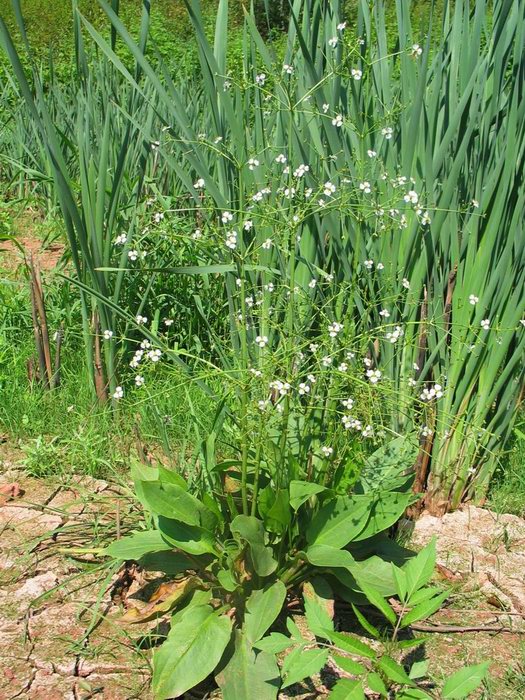Water Plantain
weed identification
Long-stalked, to 80 cm, egg-shaped to oblong-elliptic leaves up to 28cm long and 10cm wide, with prominent network of veins. Base rounded to heart-shaped. Flowers are on a tall, rigid, leafless many-branched flowering stem with single, small long-stalked, 3-petalled flowers clustered in rings towards the ends of branches. Each flower lasts 1 day, flowers white in colour. Fruit like a mandarin.
Lakes, swamps, creeks, fringing on the edges of waterways.
Seed or division of root stock. Flowering time: November – March
Seeds dispersed via wildlife and water movement
Fruit and leaves a food source for native wildlife.
What does Water Plantain look like?
Disadvantages of Water Plantain
Full coverage of a pond or dam by Water Plantain is uncommon but may cause issues such as:
- Dense infestations may cause deoxygenation of the water
- May shade out other aquatic plants
- Dense infestations may cause fish and other aquatic life death
- Can provide a breeding ground for mosquitos
treatment
AQ200 Aquatic Herbicide + Wetting Agent – Chemical Herbicide designed to kill emergent weeds quickly. Use on mild to severe infestations.
Aquatic Weed Rake and Razor Combo – DIY physical removal. Ideal for mild infestations, sensitive water bodies or to aid herbicide treatment.
Aquatic Harvesting – Large amphibious machine that cuts and clears emergent aquatic weeds. Book this service for severe infestations or for larger water bodies.
prevention options
Aerating Fountains – Reduces the severity and likelihood of aquatic weed infestations. Use in any body of water.







